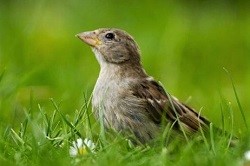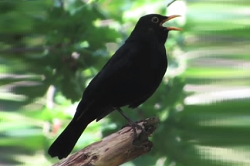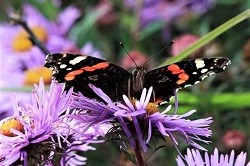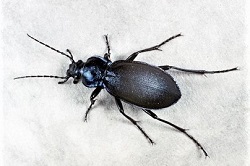MAY
Don’t let the warm sunshine tempt you to put plants out too soon – frosts are still possible.
Harden off Indoor-raised plants by putting them out in the warmest part of the day first and then extending the time they spend outside.
If in doubt, leave very tender plants, like dahlias and cannas, until June starts – they can quickly make up for a short delay, but a cold snap can really leave them struggling.
Click on any picture or text link for more info
Prune spring flowering shrubs,  such as Forsythia, Berberis, Chaenomeles (Japanese quince) and Choisya, as soon as they have finished flowering; this keeps them compact, whilst giving plenty of time for new shoots to develop that will bear next spring’s flowers.
such as Forsythia, Berberis, Chaenomeles (Japanese quince) and Choisya, as soon as they have finished flowering; this keeps them compact, whilst giving plenty of time for new shoots to develop that will bear next spring’s flowers.
Even with doors and vents open, greenhouse shading will be needed on very sunny days, to prevent plants wilting or being scorched. 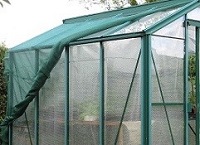
Shade netting put over the outside of the greenhouse has the advantage that it can easily be drawn back to avoid cutting out light in cooler, cloudy weather.
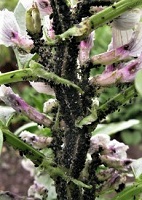 Blackfly on broad beans: the best way to combat the inevitable attack is to pinch out the tender tops of the plants as soon as the lowest flowers have set – do this even if there are no signs of blackfly yet.
Blackfly on broad beans: the best way to combat the inevitable attack is to pinch out the tender tops of the plants as soon as the lowest flowers have set – do this even if there are no signs of blackfly yet.
Twining climbers, such as honeysuckle, Clematis and Wisteria, need regular tying in to train them up their supports.
Late May is “Chelsea chop” time: late flowering perennials, such as Echinacea, Helenium, Phlox paniculata and upright-growing Sedum, can be cut back by one third to one half.
late flowering perennials, such as Echinacea, Helenium, Phlox paniculata and upright-growing Sedum, can be cut back by one third to one half.
This will delay flowering, but give more sturdy plants that will need less support. The size of the flowers may be reduced, but there will be more of them.
Cutting back just the front of a clump will extend the overall flowering season.
Codling moth pheromone traps 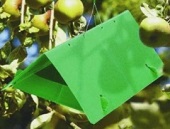 should be put out by the middle of the month. These help protect apples and pears from the small caterpillars that ruin the fruit with their maggoty holes.
should be put out by the middle of the month. These help protect apples and pears from the small caterpillars that ruin the fruit with their maggoty holes.
Similarly, plum moth pheromone traps can help protect plums, gages and damsons.
Check lilies for the bright red lily beetle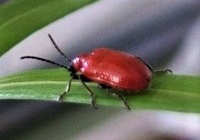 and its larvae (usually hidden under their wet black excrement). They can quickly strip the leaves if they are are not removed promptly. Fortunately, they are easy to spot and are best picked off by hand.
and its larvae (usually hidden under their wet black excrement). They can quickly strip the leaves if they are are not removed promptly. Fortunately, they are easy to spot and are best picked off by hand.
Divide conjested clumps of daffodils & other spring flowering bulbs.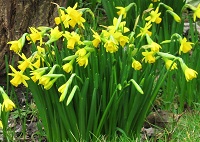
Apply a high potassium liquid fertiliser, such as tomato feed, to build up the bulbs for next year.
Let foliage die down naturally – wait 6 weeks before cutting grass with naturalised bulbs.
Protect carrots & parsnips against carrot fly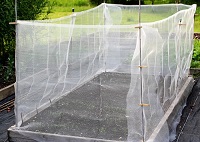 with a barrier of very finely woven plastic mesh (e.g. ‘Enviromesh’) at least 75 cm (2 1/2 ft) high – the carrot fly does not fly any higher. However, it will seek out any gap, no matter how small, and will home in on the scent of the first tiny thinnings.
with a barrier of very finely woven plastic mesh (e.g. ‘Enviromesh’) at least 75 cm (2 1/2 ft) high – the carrot fly does not fly any higher. However, it will seek out any gap, no matter how small, and will home in on the scent of the first tiny thinnings.
Increase primroses by dividing 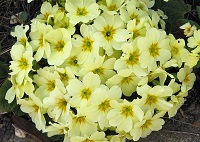 large plants after flowering.
large plants after flowering.
This is quite straight-forward: plant the divisions in a nursery bed, or pot them up if you do not have room, so that they can develop throughout the summer.
Then plant them out in the autumn where you want them them to flower next spring.
Also, check out April as many of those items are still relevant now
Wildlife in the garden
the results
with this Sussex Wildlife Trust video
for butterflies
and moths
some really useful insects in the garden
Click any day below for a more detailed weather forecast, which also looks further ahead




